Experimental Study on Positronium Detection under Millimeter Waves Generated from Plasma Wakefield Acceleration
Abstract
1. Introduction
2. Materials and Methods
2.1. Ps Generation Based on Plasma Wakefield Acceleration and mmW Source
2.2. The Ps Hyperfine Structure (HFS) for Precisive Measurement Technologies of mmW Frequency
2.3. Photoconversion of mmW Generating Positronium States with Bessel Polarization
3. Results
3.1. Detection of Ps States with Measurements for mmW and Bessel Polarization through the Three-Stepped Axicon Lens
3.2. Measurement of the Radiated Ps for the Targeted Sample In Vivo
4. Discussion
5. Conclusions
Author Contributions
Funding
Institutional Review Board Statement
Informed Consent Statement
Data Availability Statement
Conflicts of Interest
References
- Brawley, S.J.; Armitage, S.; Beale, J.; Leslie, D.E.; Williams, A.I.; Laricchia, G. Electron–Like Scattering of Positronium. Science 2016, 330, 789. [Google Scholar] [CrossRef] [PubMed]
- Kaminska, D.; Gajos, A.; Czerwinski, E.; Alfs, D.; Bednarski, T.; Białas, P.; Curceanu, C.; Dulski, K.; Głowacz, B.; Gupta–Sharma, N.; et al. A feasibility study of ortho–positronium decays measurement with the J–PET scanner based on plastic scintillators. Eur. Phys. J. C 2016, 76, 445. [Google Scholar] [CrossRef] [PubMed]
- Miyazaki, A. Direct Measurement of the Hyperfine Structure Interval of Positronium Using High–Power Millimeter Wave Technology; Springer: Tokyo, Japan, 2015. [Google Scholar]
- Mohammed, M.; Białas, P.; Curceanu, C.; Czerwiński, E.; Dulski, K.; Gajos, A.; Głowacz, B.; Gorgol, M.; Hiesmayr, B.; Jasińska, B.; et al. A Method to Produce Linearly Polarized Positrons and Positronium Atoms with the J-PET Detector. Acta Phys. Pol. A. 2017, 132, 1486–1489. [Google Scholar] [CrossRef]
- Hugenschmidt, C. Positrons insurfacephysics. Surf. Sci. Rep. 2016, 71, 547–594. [Google Scholar] [CrossRef]
- Cassidy, D.B.; Mills, A.P., Jr. The production of molecular positronium. Nature 2007, 449, 195–197. [Google Scholar] [CrossRef] [PubMed]
- Moskal, P.; Jasińska, B.; Stępień, E.Ł.; Bass, S.D. Positronium in medicine and biology. Nat. Rev. Phys. 2019, 1, 527–529. [Google Scholar] [CrossRef]
- Jung, K.O.; Kim, T.J.; Yu, J.H.; Rhee, S.; Zhao, W.; Ha, B.; Red-Horse, K.; Gambhir, S.S.; Pratx, G. Whole–body tracking of single cells via positron emission tomography. Nat. Biomed. Eng. 2020, 4, 835–844. [Google Scholar] [CrossRef]
- Moskal, P.; Kisielewska, D.; Curceanu, C.; Czerwiński, E.; Dulski, K.; Gajos, A.; Gorgol, M.; Hiesmayr, B.; Jasińska, B.; Kacprzak, K.; et al. Feasibility study of the positronium imaging with the J–PET tomograph. Phys. Med. Biol. 2019, 64, 055017. [Google Scholar] [CrossRef]
- Moskal, P. Towards Total–Body Modular PET for Positronium and Quantum Entanglement Imaging. In Proceedings of the 2018 IEEE Nuclear Science Symposium and Medical Imaging Conference Proceedings (NSS/MIC), Sydney, Australia, 10–17 November 2018. [Google Scholar]
- Shaffer, T.M.; Pratt, E.C.; Grimm, J. Utilizing the power of Cerenkov light with nanotechnology. Nat. Nanotechnol. 2017, 12, 106–117. [Google Scholar] [CrossRef]
- Miyazaki, A.; Yamazaki, T.; Suehara, T.; Namba, T.; Asai, S.; Kobayashi, T.; Saito, H.; Tatematsu, Y.; Ogawa, I.; Idehara, T. sub–THz direct spectroscopy of positronium hyperfine splitting. J. Phys. Conf. Ser. 2013, 443, 012002. [Google Scholar] [CrossRef]
- Miyazaki, A.; Yamazaki, T.; Suehara, T.; Namba, T.; Asai, T.; Kobayashi, T.; Saito, H.; Idehara, T.; Ogawa, I.; Tatematsu, Y. The Direct Spectroscopy of Positronium Hyperfine Structure Using a Sub–THz Gyrotron. J. Infrared. Milli. Terahz. Waves 2014, 35, 91–100. [Google Scholar] [CrossRef]
- Planchon, T.A.; Gao, L.; Milkie, D.E.; Davidson, M.W.; Galbraith, J.A.; Galbraith, C.G.; Betzig, E. Rapid three–dimensional isotropic imaging of living cells using Bessel beam plane illumination. Nat. Methods 2011, 8, 417–426. [Google Scholar] [CrossRef]
- Duocastella, M.; Arnold, C.B. Bessel and annular beams for materials processing. Laser Photonics Rev. 2012, 6, 5. [Google Scholar] [CrossRef]
- Mosk, A.P.; Lagendijk, A.; Lerosey, G.; Fink, M. Controlling waves in space and time for imaging and focusing in complex media. Nat. Photonics 2012, 6, 283–292. [Google Scholar] [CrossRef]
- Zhu, X.L.; Yu, T.P.; Sheng, Z.M.; Yin, Y.; Turcu, I.C.E.; Pukhov, A. Dense GeV electron–positron pairs generated by lasers in near–critical–density plasmas. Nat. Commun. 2016, 7, 13686. [Google Scholar] [CrossRef]
- Ni, J.; Wang, C.; Zhang, C.; Hu, Y.; Yang, L.; Lao, Z.; Xu, B.; Li, J.; Wu, D.; Chu, J. Three–dimensional chiral microstructures fabricated by structured optical vortices in isotropic material. Light Sci. Appl. 2017, 6, e17011. [Google Scholar] [CrossRef]
- Wu, Z.; Wang, X.; Sun, W.; Feng, S.; Han, P.; Ye, J.; Zhang, Y. Vector characterization of zeroorder terahertz Bessel beams with linear and circular polarizations. Sci. Rep. 2017, 7, 13929. [Google Scholar] [CrossRef]
- Gu, Y.J.; Klimo, O.; Bulanov, S.V.; Weber, S. Brilliant gamma–ray beam and electron–positron pair production by enhanced attosecond pulses. Commun. Phys. 2018, 1, 93. [Google Scholar] [CrossRef]
- Vranic, M.; Klimo, O.; Korn, G.; Weber, S. Multi–GeV electron–positron beam generation from laser–electron scattering. Sci. Rep. 2018, 8, 4702. [Google Scholar] [CrossRef]
- Kulya, M.S.; Semenova, V.A.; Bespalov, V.G.; Petrov, N.V. On terahertz pulsed broadband Gauss–Bessel beam free–space propagation. Sci. Rep. 2018, 8, 1390. [Google Scholar] [CrossRef]
- Meng, Y.; Yi, J.; Burokur, S.N.; Kang, L.; Zhang, H.; Werner, D.H. Phase–modulation based transmitarray convergence lens for vortex wave carrying orbital angular momentum. Opt. Express 2018, 26, 17. [Google Scholar] [CrossRef]
- Gong, L.; Zhao, Q.; Zhang, H.; Hu, X.Y.; Huang, K.; Yang, J.M.; Li, Y.M. Optical orbital–angular–momentum multiplexed data transmission under high scattering. Light Sci. Appl. 2019, 8, 27. [Google Scholar] [CrossRef]
- Doche, A.; Beekman, C.; Corde, S.; Allen, J.M.; Clarke, C.I.; Frederico, J.; Gessner, S.J.; Green, S.Z.; Hogan, M.J.; O’Shea, B.; et al. Acceleration of a trailing positron bunch in a plasma wakefield accelerator. Sci. Rep. 2017, 7, 14180. [Google Scholar] [CrossRef]
- Min, S.H.; Kwon, O.; Sattorov, M. Effects on electronics exposed to high–power microwaves on the basis of a relativistic backward wave oscillator operating on the X–band. J. Electromagn. Waves Appl. 2017, 31, 1875–1901. [Google Scholar] [CrossRef]
- Naji, A.; Stupakov, G.; Huang, Z.; Bane, K. Field analysis for a highly overmoded iris line with application to THz radiation transport. Phys. Rev. Accel. 2022, 5, 043501. [Google Scholar] [CrossRef]
- Hummelt, J.S.; Jawla, S.; Kowalski, E.J.; Shapiro, M.A.; Temkin, R.J. Overmoded Traveling Wave Tubes for MM and THz Applications. In Proceedings of the 2015 40th International Conference on Infrared, Millimeter, and Terahertz Waves (IRMMW–THz), Hong Kong, China, 23–28 August 2015. [Google Scholar]
- Min, S.H.; Kwon, O.; Sattorov, M. Design study of gw–thz wave transmission without mode competition in an oversized relativistic backward wave oscillator. IEEE Trans. Plasma Sci. 2017, 45, 610–622. [Google Scholar] [CrossRef]
- Thompson, M.C.; Badakov, H.; Cook, A.M.; Rosenzweig, J.B.; Tikhoplav, R.; Travish, G.; Blumenfeld, I.; Hogan, M.J.; Ischebeck, R.; Kirby, N.; et al. Breakdown Limits on Gigavolt–per–Meter Electron–Beam–Driven Wakefields in Dielectric Structures. Phys. Rev. Lett. 2008, 100, 214801. [Google Scholar] [CrossRef] [PubMed]
- Cook, A.M.; Tikhoplav, R.; Tochitsky, S.Y.; Travish, G.; Williams, O.B.; Rosenzweig, J.B. Observation of Narrow–Band Terahertz Coherent Cherenkov Radiation from a Cylindrical Dielectric–Lined Waveguide. Phys. Rev. Lett. 2009, 103, 095003. [Google Scholar] [CrossRef] [PubMed]
- Foot, C.J. Atomic Physics, 1st ed.; Oxford University Press: Oxford, UK, New York, NY, USA, 2005. [Google Scholar]
- Itzykson, C.; Zuber, J.B. Quantum Field Theory, 1st ed.; Dover Publications, GF Books, Inc.: Hawthorne, CA, USA, 2006. [Google Scholar]
- Loudon, R. The Quantum Theory of Light, 3rd ed.; Oxford University Press, Oxford University Press Inc.: New York, NY, USA, 2001. [Google Scholar]
- Wilmink, G.J.; Grundt, J.E. Invited Review Article: Current State of Research on Biological Effects of Terahertz Radiation. J. Infrared Milli Terahz Waves 2011, 32, 1074–1122. [Google Scholar] [CrossRef]
- Rahman, A.; Rahmana, A.K.; Tomalia, D.A. Engineering dendrimers to produce dendrimer dipole excitation based terahertz radiation sources suitable for spectrometry, molecular and biomedical imaging. Nanoscale Horiz. 2017, 2, 127–134. [Google Scholar] [CrossRef]
- Luo, L.; Men, L.; Liu, Z.; Mudryk, Y.; Zhao, X.; Yao, Y.; Joong, M.; Park, J.M.; Shinar, R.; Shinar, J.; et al. Ultrafast terahertz snapshots of excitonic Rydberg states and electronic coherence in an organometal halide perovskite. Nat. Commun. 2016, 8, 15565. [Google Scholar] [CrossRef]
- Yamakawa, H.; Miyamoto, T.; Morimoto, T.; Takamura, N.; Liang, S.; Yoshimochi, H.; Terashige, T.; Kida, N.; Suda, M.; Yamamoto, H.M.; et al. Terahertz–field–induced polar charge order in electronic–type dielectrics. Nat. Commun. 2021, 12, 953. [Google Scholar]
- Mower, L. Decay theory of closely coupled unstable states. Phys. Rev. 1966, 142, 799. [Google Scholar] [CrossRef]
- Deutsch, M.; Brown, S.C. Zeeman effect and hyperfine splitting of positronium. Phys. Rev. 1952, 85, 1047. [Google Scholar] [CrossRef]
- Sasaki, Y.; Miyazaki, A.; Ishida, A.; Namba, T.; Asai, S.; Kobayashia, T.; Saitob, H.; Tanaka, K.; Yamamoto, A. Measurement of positronium hyperfine splitting with quantum oscillation. Phys. Lett. B 2011, 697, 121–126. [Google Scholar] [CrossRef]
- Cassidy, D.B.; Hisakado, T.H.; Tom, H.W.K.; Mills, A.P., Jr. Positronium hyperfine interval measured via saturated absorption spectroscopy. Phys. Rev. Lett. 2012, 109, 073401. [Google Scholar] [CrossRef]
- Ishida, A. New precise measurement of the hyperfine splitting of positronium. J. Phys. Chem. Ref. Data 2015, 44, 031212. [Google Scholar] [CrossRef]
- Kilburn, D.; Townrow, S.; Meunier, V.; Richardson, R.; Alam, A.; Ubbink, J. Organization and mobility of water in amorphous and crystalline trehalose. Nat. Mater. 2006, 5, 632–635. [Google Scholar] [CrossRef]
- Fong, C.; Dong, A.W.; Hill, A.J.; Boyd, B.J.; Drummond, C.J. Positron annihilation lifetime spectroscopy (PALS): A probe for molecular organisation in self–assembled biomimetic systems. Phys. Chem. Chem. Phys. 2015, 17, 17527–17540. [Google Scholar] [CrossRef]
- Shibuya, K.; Saito, H.; Nishikido, F.; Takahashi, M.; Taiga Yamaya, T. Oxygen sensing ability of positronium atom for tumor hypoxia imaging. Commun. Phys. 2020, 3, 173. [Google Scholar] [CrossRef]
- Mitchell, S.; Lars Gerchow, L.; Warringham, R.; Paolo Crivelli, P.; Javier Pérez–Ramírez, J. Shedding New Light on Nanostructured Catalysts with Positron Annihilation Spectroscopy. Small Methods 2018, 2, 1800268. [Google Scholar] [CrossRef]
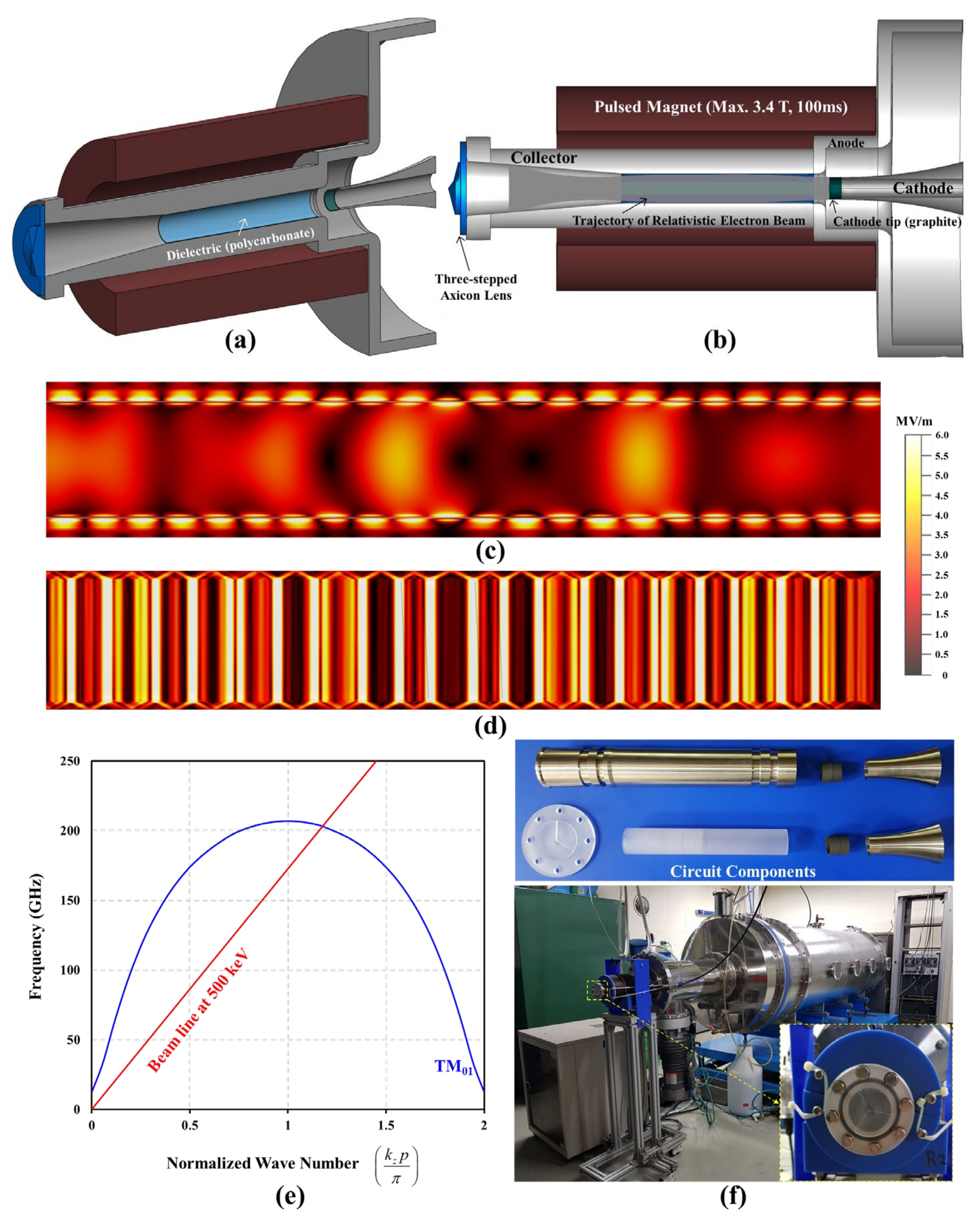
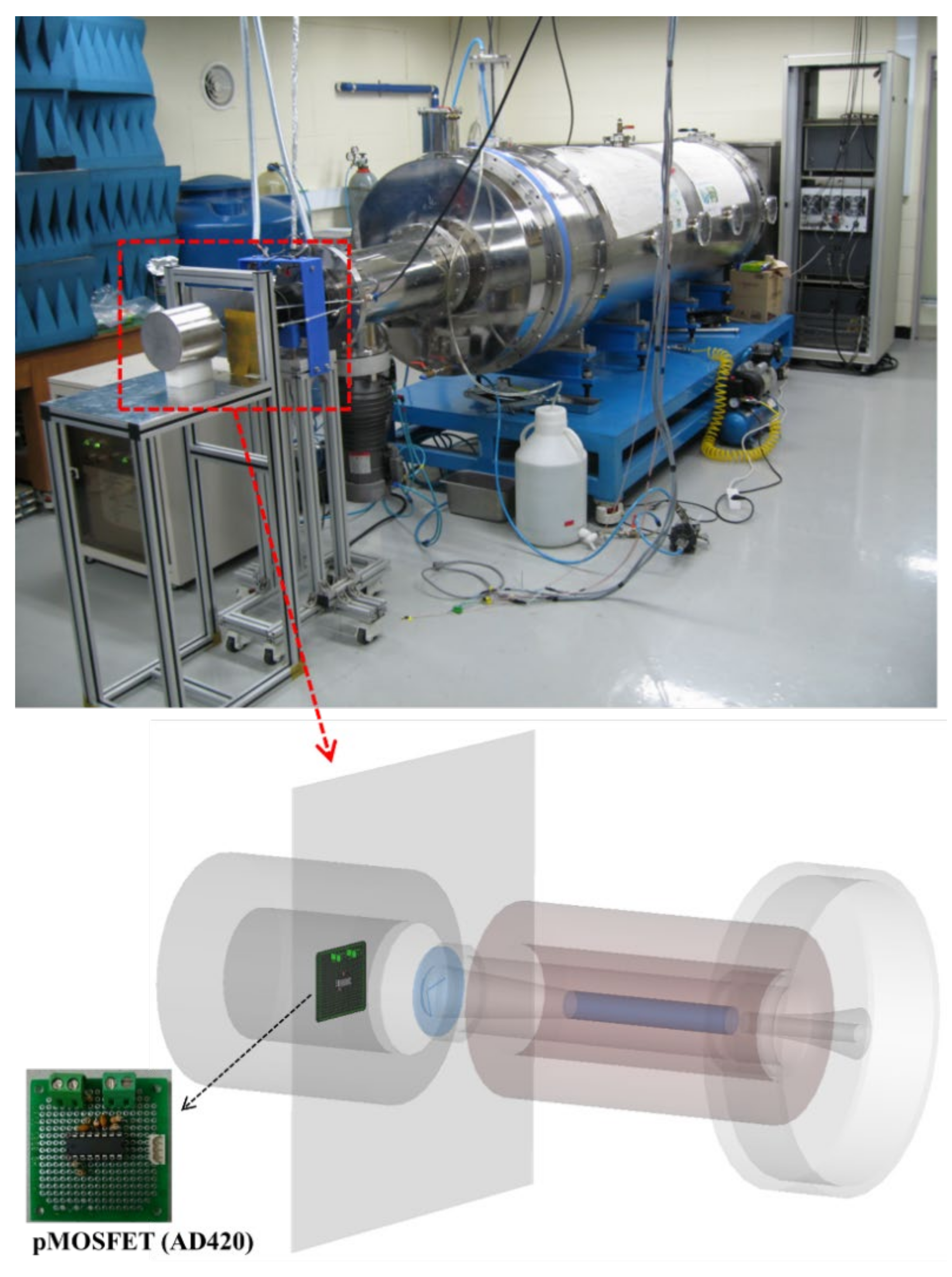
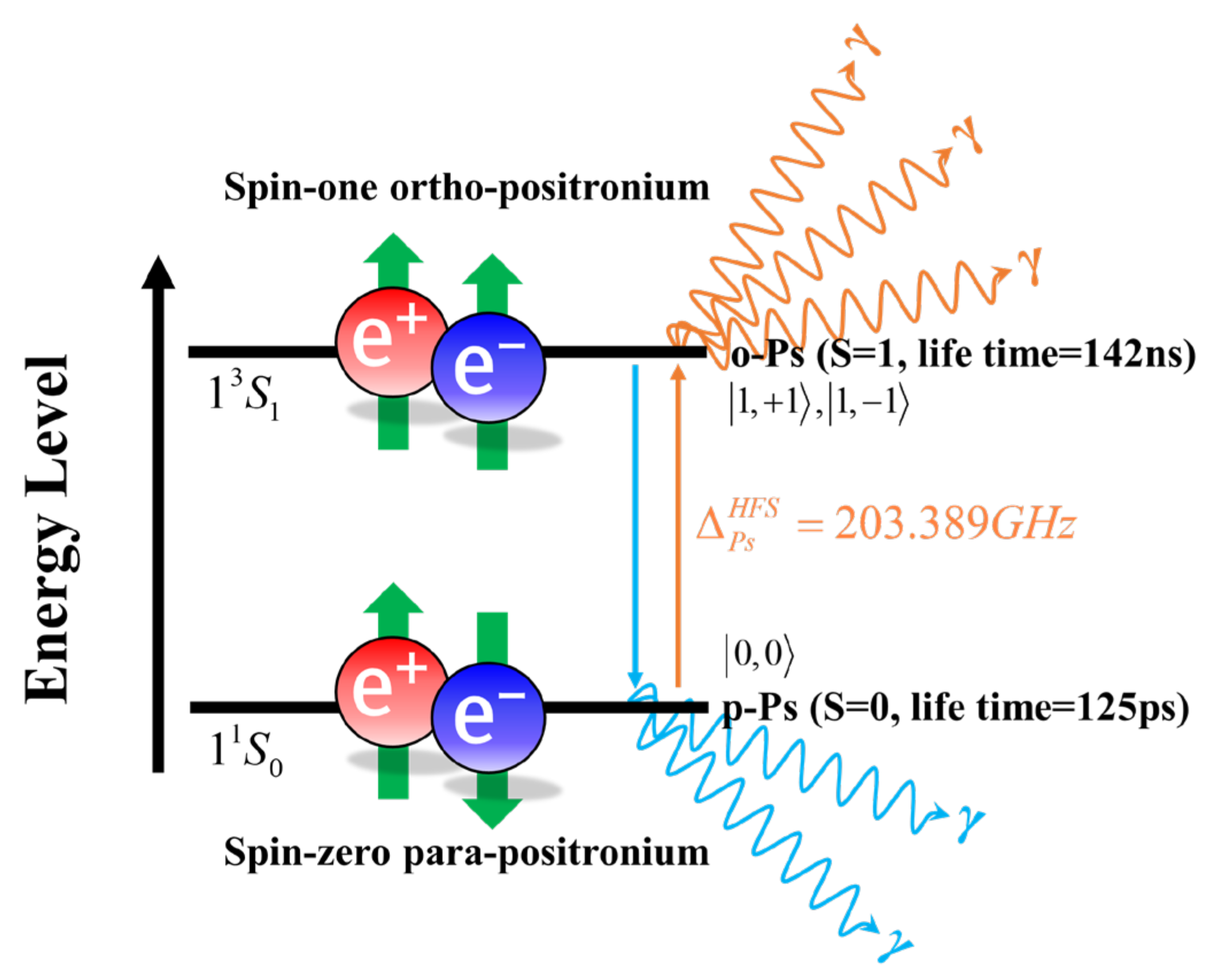
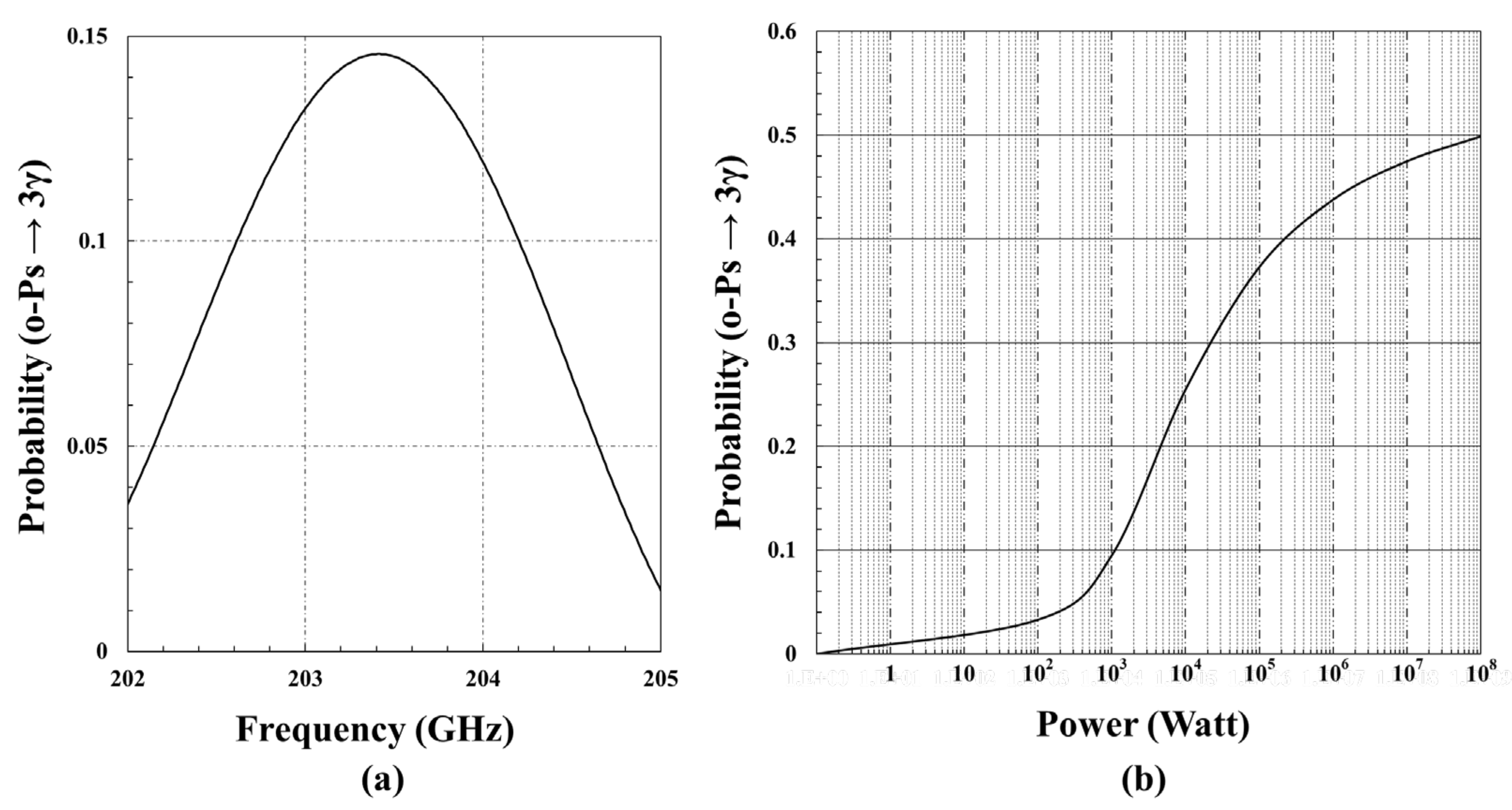
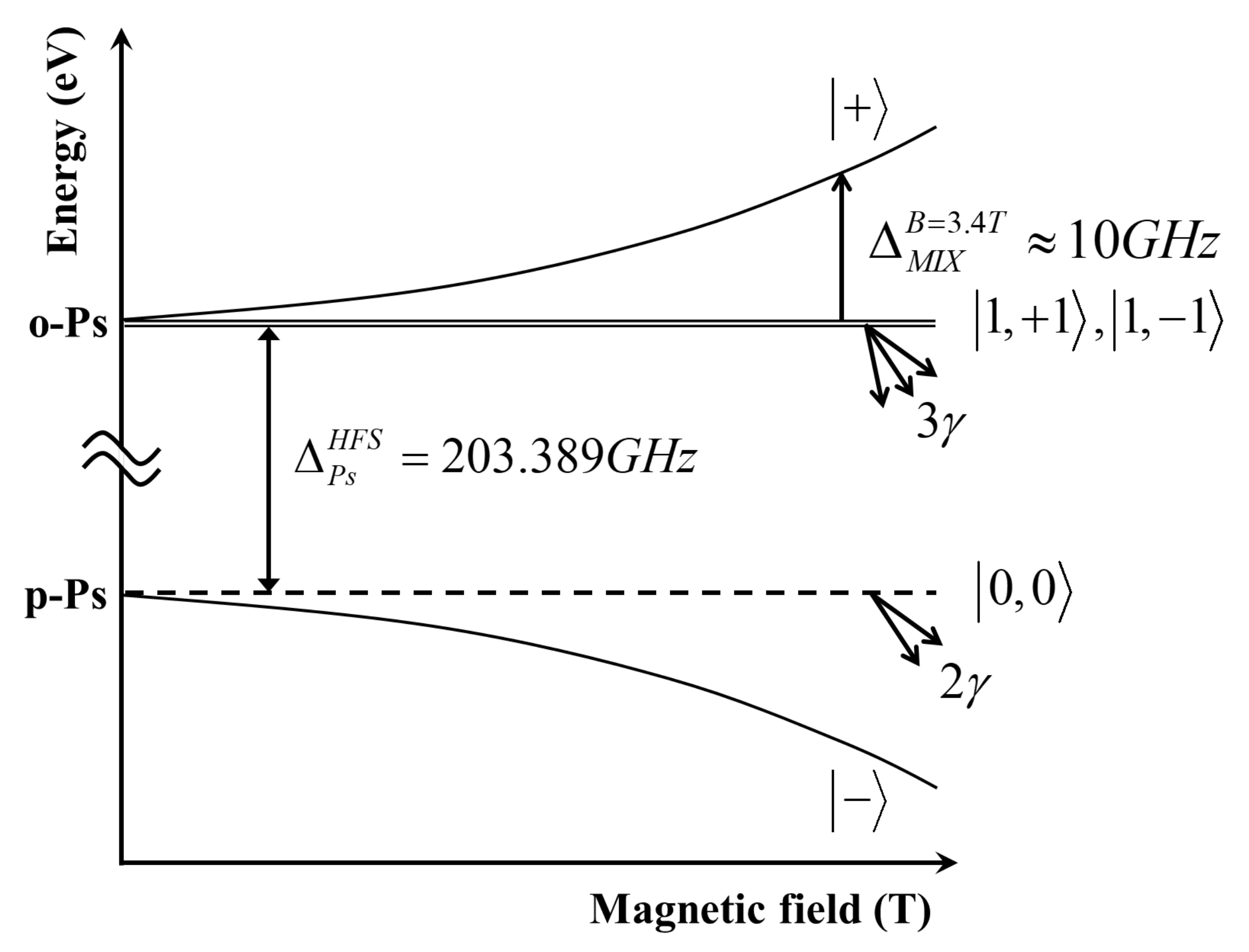
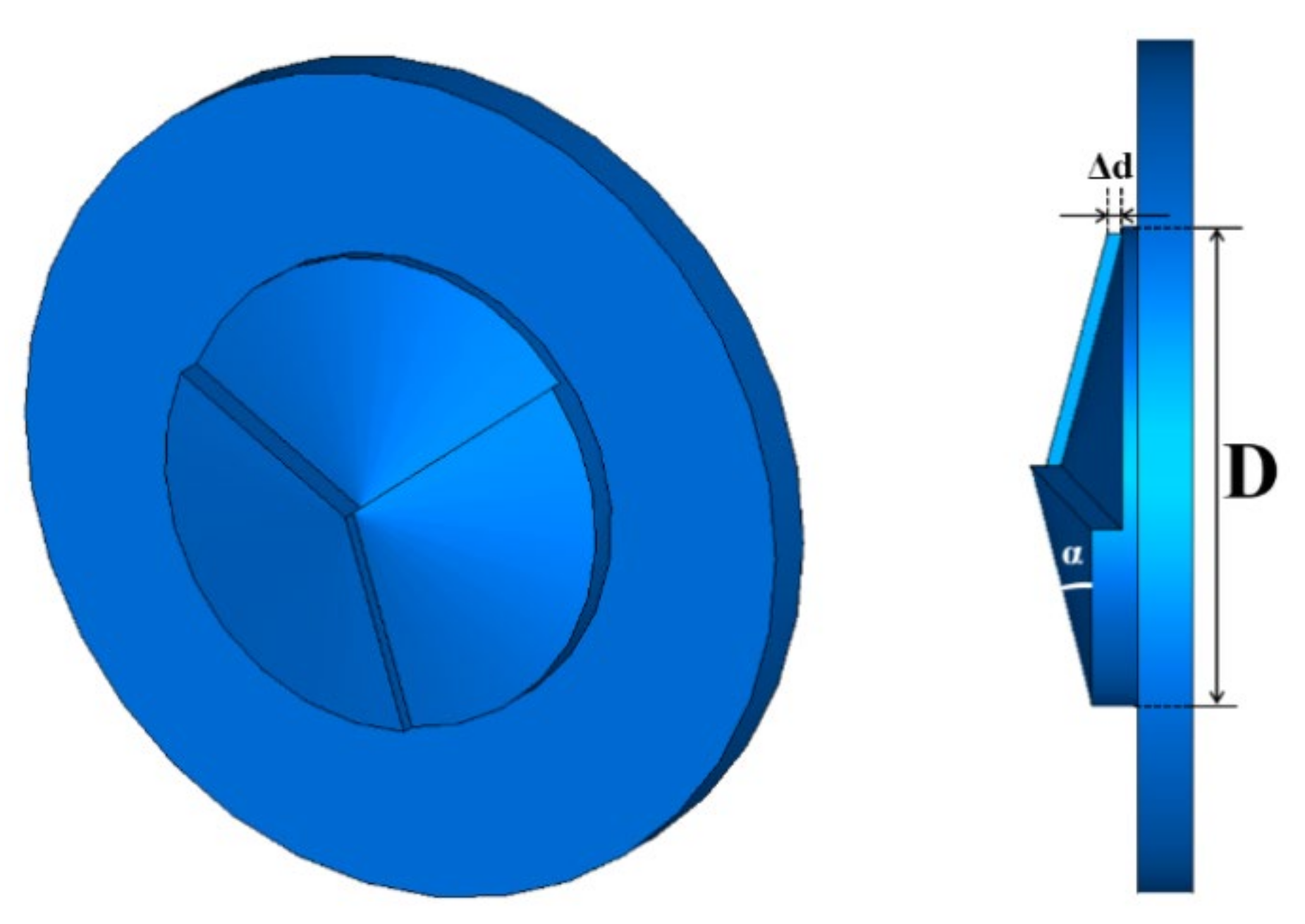
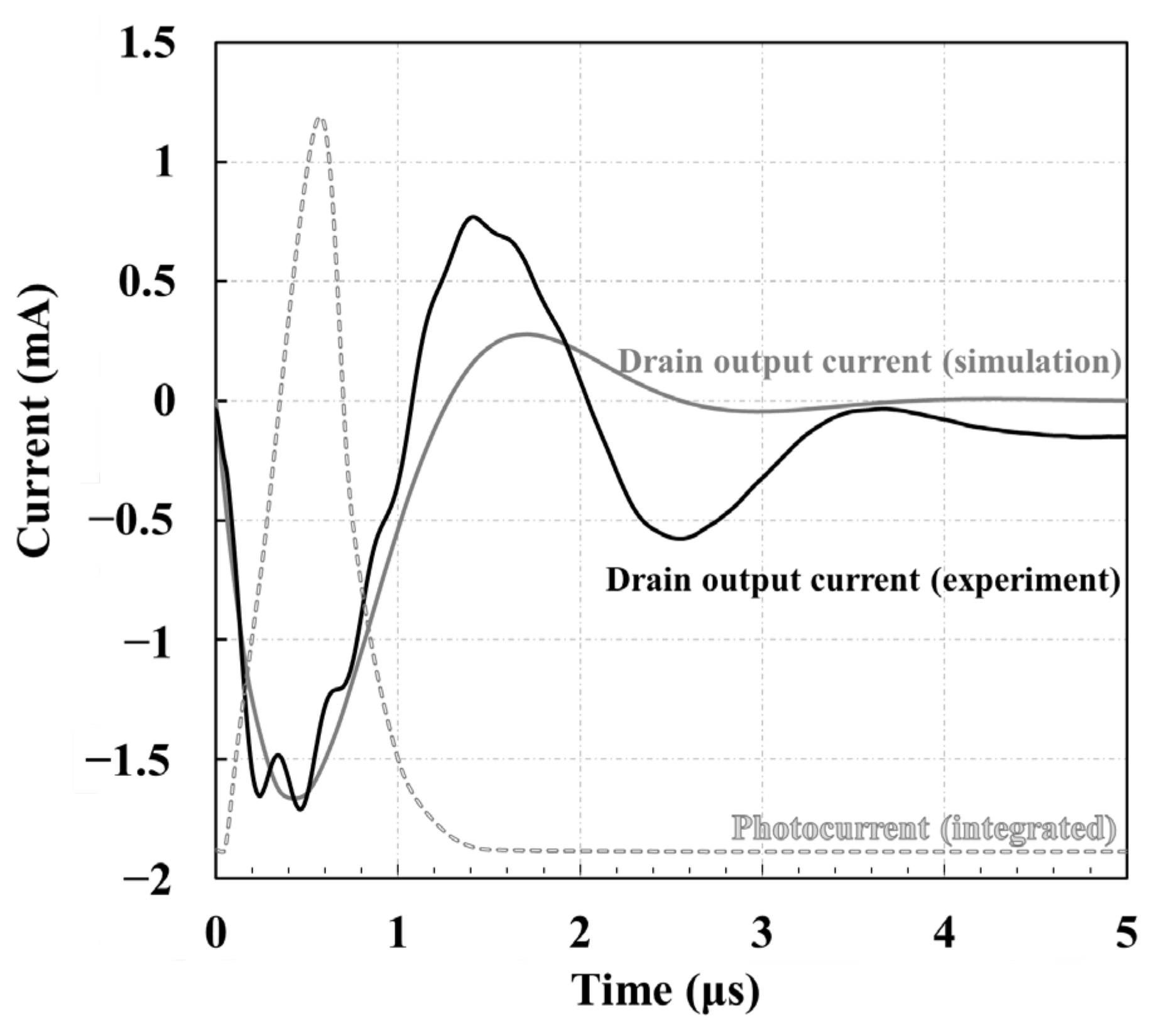
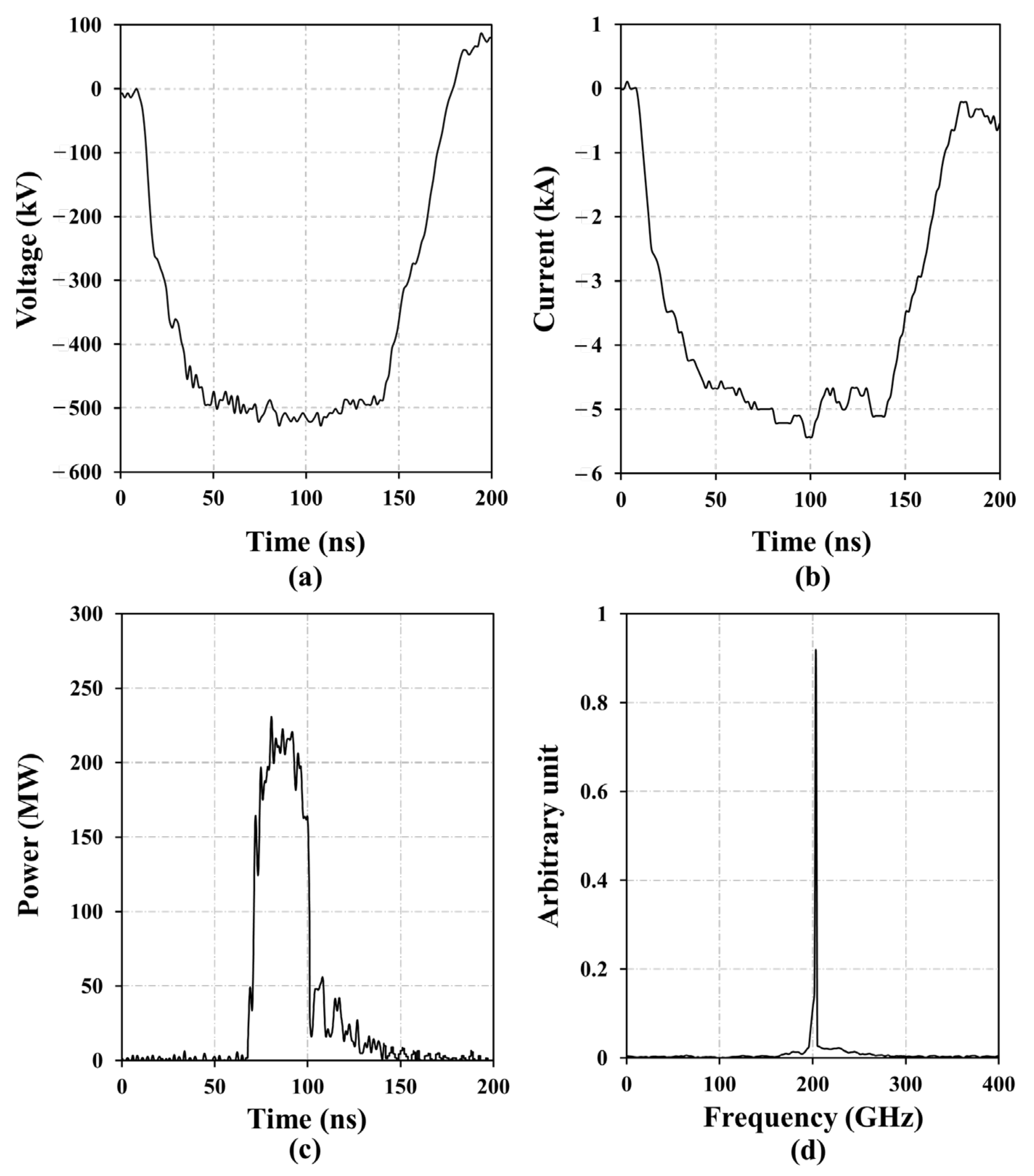
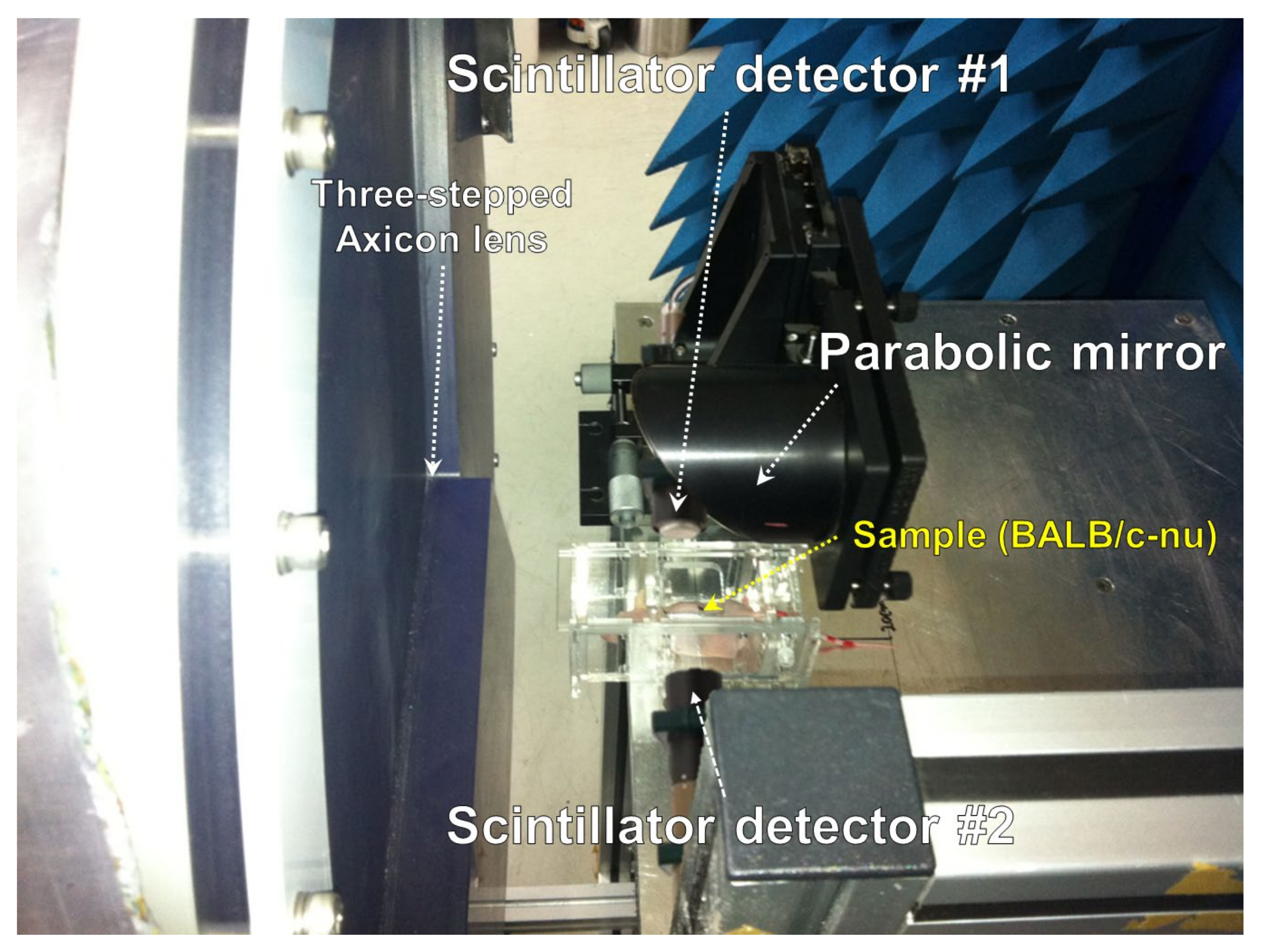

Publisher’s Note: MDPI stays neutral with regard to jurisdictional claims in published maps and institutional affiliations. |
© 2022 by the authors. Licensee MDPI, Basel, Switzerland. This article is an open access article distributed under the terms and conditions of the Creative Commons Attribution (CC BY) license (https://creativecommons.org/licenses/by/4.0/).
Share and Cite
Min, S.-H.; Park, C.; Lee, K.C.; Lee, Y.J.; Sattorov, M.; Kim, S.; Hong, D.; Park, G.-S. Experimental Study on Positronium Detection under Millimeter Waves Generated from Plasma Wakefield Acceleration. Electronics 2022, 11, 3178. https://doi.org/10.3390/electronics11193178
Min S-H, Park C, Lee KC, Lee YJ, Sattorov M, Kim S, Hong D, Park G-S. Experimental Study on Positronium Detection under Millimeter Waves Generated from Plasma Wakefield Acceleration. Electronics. 2022; 11(19):3178. https://doi.org/10.3390/electronics11193178
Chicago/Turabian StyleMin, Sun-Hong, Chawon Park, Kyo Chul Lee, Yong Jin Lee, Matlabjon Sattorov, Seonmyeong Kim, Dongpyo Hong, and Gun-Sik Park. 2022. "Experimental Study on Positronium Detection under Millimeter Waves Generated from Plasma Wakefield Acceleration" Electronics 11, no. 19: 3178. https://doi.org/10.3390/electronics11193178
APA StyleMin, S.-H., Park, C., Lee, K. C., Lee, Y. J., Sattorov, M., Kim, S., Hong, D., & Park, G.-S. (2022). Experimental Study on Positronium Detection under Millimeter Waves Generated from Plasma Wakefield Acceleration. Electronics, 11(19), 3178. https://doi.org/10.3390/electronics11193178





